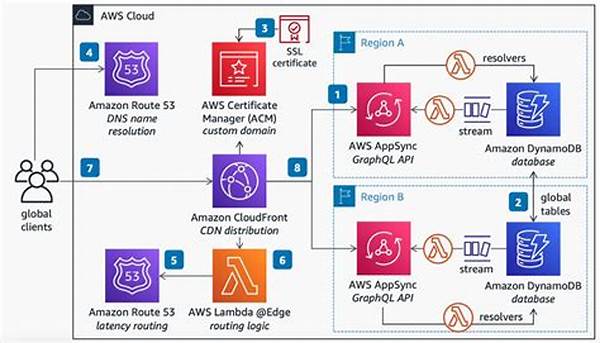In the increasingly interconnected digital world, Application Programming Interfaces (APIs) play a pivotal role in enabling seamless interactions between different platforms. As businesses implement APIs across multiple platforms, the challenge of reducing latency becomes a critical focus. Latency is the time delay in data transmission between a client and a server. High latency can adversely affect user experience, leading to dissatisfaction and potential revenue loss. Therefore, it is imperative for developers and organizations to adopt strategies aimed at reducing latency in multi-platform APIs. This involves optimizing all stages of data processing, including request handling, data retrieval, and response delivery, to ensure quick and efficient communication across diverse platforms.
Read Now : Bibliometric Analysis For Academic Research
Optimization Techniques for Reducing Latency
One primary method for reducing latency in multi-platform APIs is the implementation of efficient data caching mechanisms. By temporarily storing frequently accessed data closer to the client, APIs can considerably decrease the time taken to respond to requests, thereby reducing latency. Additionally, employing content delivery networks (CDNs) can significantly enhance performance, as they allow data to be accessed from a geographically closer server. Another strategy involves optimizing the API request and response payload sizes, ensuring that only necessary data is transmitted. Furthermore, developers should employ robust load balancing techniques to distribute client requests evenly across servers, reducing the risk of server overload and minimizing latency. Lastly, adopting asynchronous processing can enhance API responsiveness by enabling non-blocking operations.
Advanced Strategies for Latency Reduction
To further enhance the effectiveness of strategies aimed at reducing latency in multi-platform APIs, developers can explore advanced architectural patterns. For instance, microservices architecture allows for independent deployment and scaling of different services, decreasing the complexity and size of API requests. Incorporating message queues can also facilitate the smooth handling of high volumes of requests without causing bottlenecks. Developers should conduct continuous performance monitoring and logging to identify latency issues and refine their solutions. Implementing these advanced strategies not only aids in reducing latency but also enhances the API’s resilience and scalability across platforms.
Importance of Reducing Latency
Reducing latency in multi-platform APIs is crucial for maintaining user satisfaction. Users today expect quick and seamless digital interactions, and any delay can deter engagement and affect brand perception. Furthermore, effective latency management can contribute to increased system efficiency and reduced operational costs. Organizations investing in reducing latency in multi-platform APIs often witness improved customer retention rates and better competitive advantage. This highlights the necessity for businesses to prioritize and continuously refine their latency reduction methodologies.
Future Trends in Latency Reduction
As technology evolves, reducing latency in multi-platform APIs will continuously shape the future of digital interactions. The adoption of edge computing is anticipated to play a significant role, as it allows data processing closer to the source, minimizing latency. Additionally, advances in machine learning and AI can offer predictive insights into potential latency bottlenecks, allowing for proactive enhancements. The integration of 5G technology is also expected to reduce latency significantly, offering faster and more reliable connections. Organizations must keep pace with these technological advancements to optimize their API performance continually.
Read Now : Enhancing Consistency In Research Findings
Challenges in Reducing Latency
Developers face several challenges when it comes to reducing latency in multi-platform APIs. One major challenge is handling the uniformity of APIs across diverse environments and platforms. Ensuring consistent performance across various devices and networks requires meticulous planning and optimization. Additionally, as APIs become more complex, maintaining minimal latency while addressing security and compliance requirements can pose difficulties. Developers must also contend with varying network speeds and capacities across different regions, necessitating tailored solutions.
Summary of Reducing Latency in Multi-Platform APIs
Reducing latency in multi-platform APIs remains a paramount concern for developers and organizations aiming to enhance user experience and operational efficiency. By employing a combination of foundational and advanced techniques, such as data caching, microservices architecture, and edge computing, significant improvements can be achieved. Continuous monitoring and adaptation to technological changes are essential to maintaining low latency across evolving platforms. Ensuring that these strategies are in place not only supports immediate gains in performance but also positions businesses for future success in an increasingly digital marketplace.
